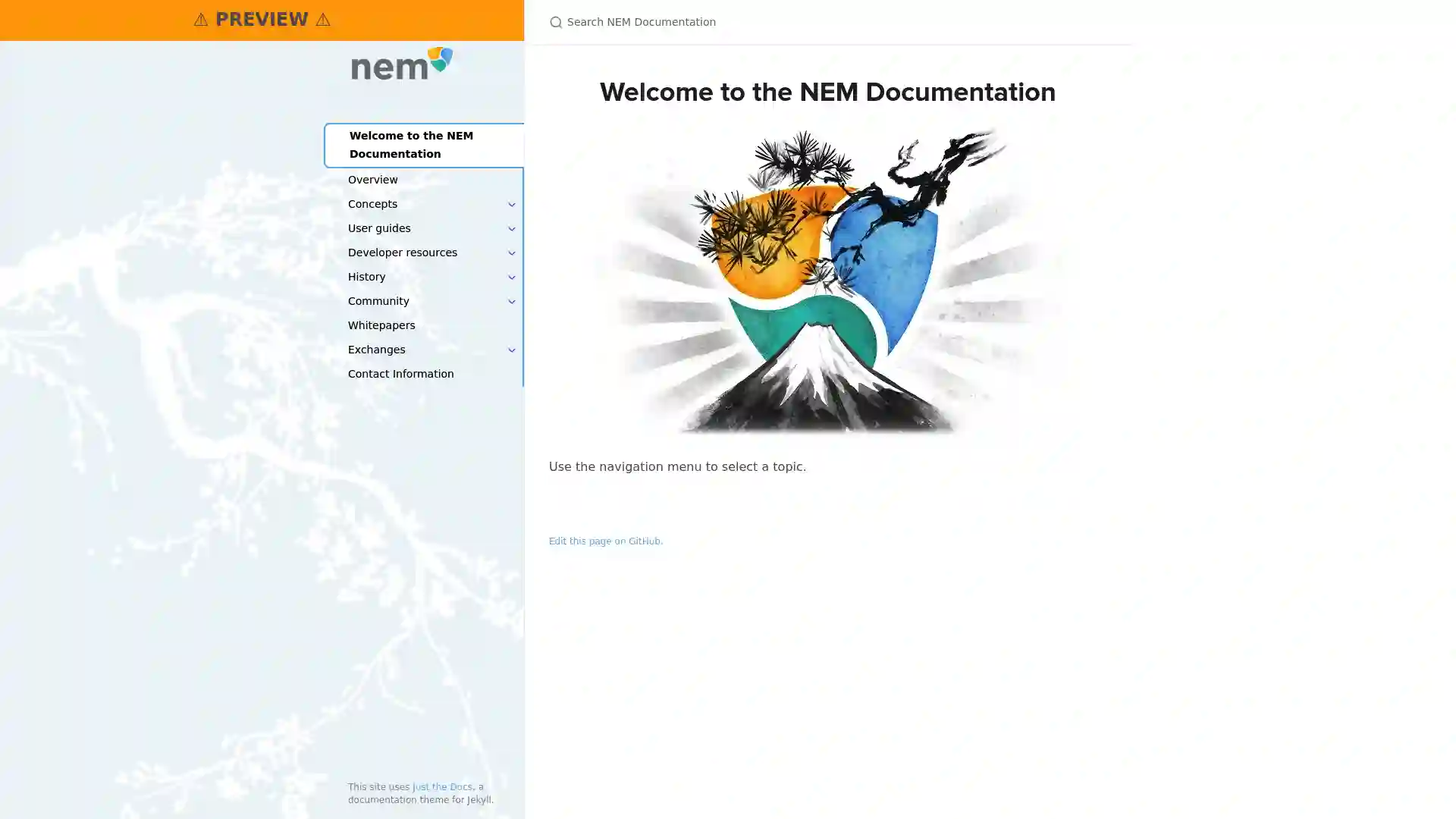NEM (XEM)
NEM is a peer-to-peer cryptocurrency and blockchain platform that launched on March 31, 2015. Initially developed in Java, with plans for a C++ version, NEM aims for a wide distribution model and introduces several innovative features to blockchain technology. These include the proof-of-importance (POI) algorithm, multisignature accounts, encrypted messaging, and an Eigentrust++ reputation system. The platform enables multiple ledgers to coexist on a single blockchain, and its Smart Assets feature allows users to create mosaics, which can represent any asset. Transactions on NEM incur a fee paid with XEM, the network's native mosaic.
NEM Foundation and expansion

| Ticker | XEM |
| Category | |
| Website | https://nem.io/ |
| @nemofficial | |
| https://www.reddit.com/r/nem |
In July 2018, the NEM Foundation established a Blockchain Center in Kuala Lumpur, Malaysia. This center functions as an incubator, accelerator, and co-working space, serving as the Southeast Asian regional headquarters for NEM. Spanning 11,000 square feet, it is recognized as the largest blockchain center in the region.
History of NEM
NEM was conceived by a Bitcoin Talk forum user known as UtopianFuture, who drew inspiration from the Nxt platform. Although initially intended as a fork of Nxt, NEM evolved into a completely new codebase. On January 19, 2014, an open call for participation was announced on the Bitcointalk forum, aiming to build a community-oriented cryptocurrency. The NEM Foundation was created in 2016, two years after the public chain launch. Established as a Company Limited by Guarantee in Singapore, the foundation initially focused on brand awareness, marketing, training, and partnerships. In late 2018, a new council was elected by members, marking the end of the first council’s term.
Real-world applications
Blockchain in elections
In July 2018, the Ukraine Central Election Commission explored using the NEM platform’s blockchain technology for elections. Tests were conducted in a controlled environment with 28 nodes, using test coins provided by the NEM Foundation. The commission estimated the cost of a node to be approximately $1,227, highlighting the technology's potential utility in voting processes.
Authentication of academic certificates
In November 2018, Malaysia's Ministry of Education formed a consortium of universities to utilize NEM's blockchain technology for authenticating academic certificates. This initiative aimed to combat the rise of fraudulent degree certificates and optimize certificate authentication processes. The ministry selected NEM for its unique features in managing traceability and authentication requirements.
Architecture of NEM
NEM's architecture comprises two main components: the node or NEM Infrastructure Server (NIS) and the client used to interact with the nodes. The NanoWallet, built with HTML and JavaScript, serves as NEM's cryptocurrency wallet. The NEM Community Client (NCC), a previous client software with an integrated wallet, has been deprecated in favor of the NanoWallet. Both the NCC and NanoWallet can operate offline, providing enhanced security through an airgap.
Features of NEM
Namespaces
Namespaces on the NEM blockchain allow users to own domain-like names, similar to internet domain ownership. A namespace can have sub-namespaces, and users can create multiple sub-namespaces with the same name. Namespaces can have up to three levels, including the main namespace and two levels of sub-namespace domains.
Reputation and harvesting
The NEM network employs a modified version of Eigentrust++ to manage node reputation and minimize malicious activity. This algorithm evaluates node behavior and allows nodes to assign reputations to their neighbors. Unlike proof-of-work, which emphasizes the quantity of work, Eigentrust++ focuses on the quality of work, contributing to the network's efficiency. NEM uses a "proof of importance" (POI) system to score users for harvesting XEM. Users need a balance of 10,000 XEM and must actively engage in transactions to earn a score.
Multisignature transactions
NEM's multisignature contracts are integrated into the blockchain, offering users numerous advantages and possibilities. These contracts enable multiple users to manage an account's activities, control assets like XEM, and create additional contracts, such as new tokens.
